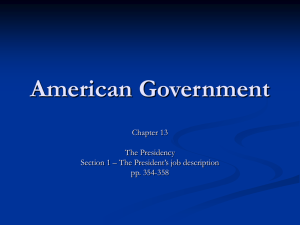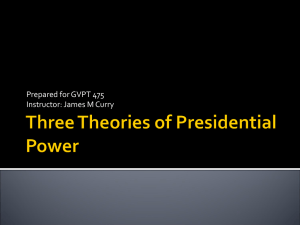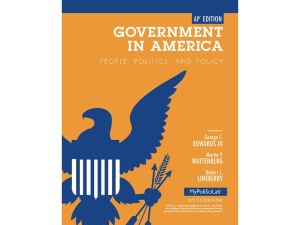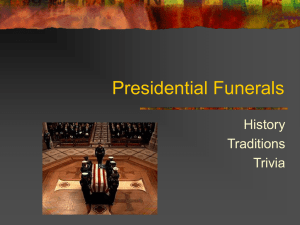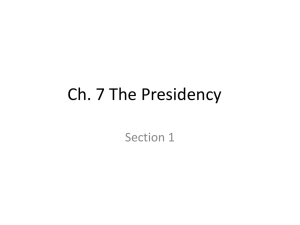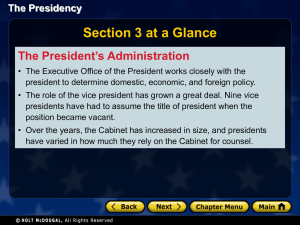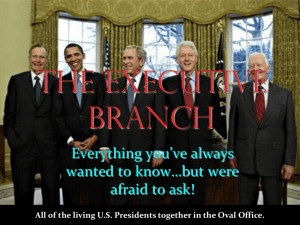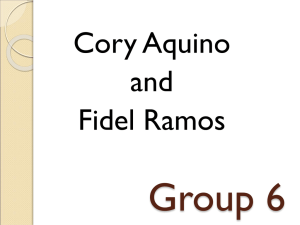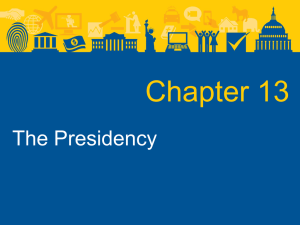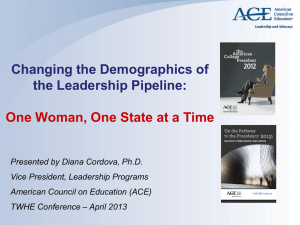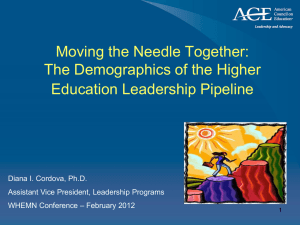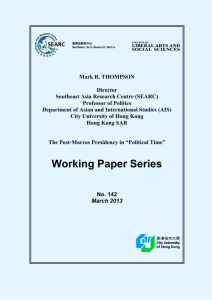PowerPoint
advertisement
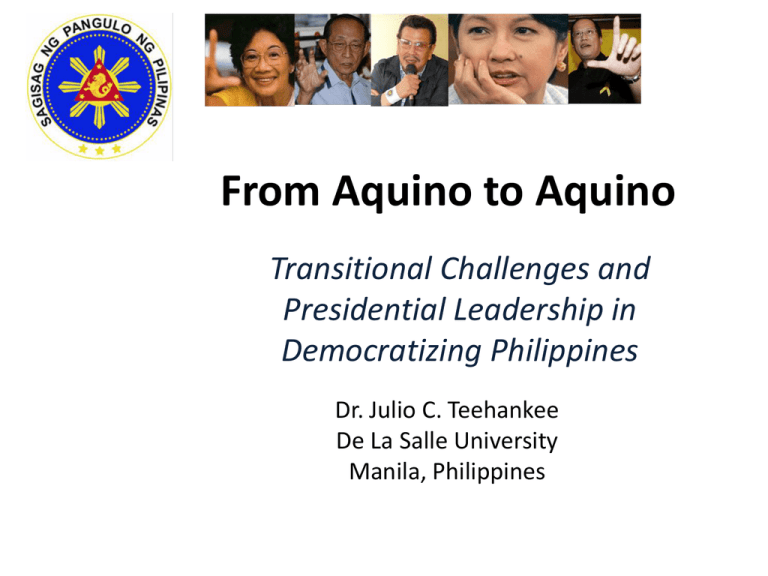
From Aquino to Aquino Transitional Challenges and Presidential Leadership in Democratizing Philippines Dr. Julio C. Teehankee De La Salle University Manila, Philippines The Puzzle? • In a developing democracy like the Philippines, identifying the ineffectiveness of our presidents has become an obsession. • “Pundits are quick to point out what is wrong, but short on explaining what is wrought.” ►What can Philippine presidents actually do during their term? ►What factors prevents or enables them to provide presidential leadership? ►What is the impact of the presidential transition on the rest of their term? The Philippine Presidency • the most durable in the Asian region • one of three presidential systems in East Asia (South Korea & Indonesia) • fifteen presidents since the first Philippine Republic was inaugurated in 1899 The Philippine Presidency: American Template Personal Model Richard Neustadt • presidents must persuade • reputation, prestige, perception, & judgement • personal style Regime Model Stephen Skowronek • presidents come to power within regimes (institutional arrangement) • structural pattern of regime change • cycle of presidents within regimes Structured Choice Model Robert Lieberman • opportunities for strategic presidential action within structurally defined & delimited situation • structure & agency, regimes & choice The Philippine Presidency: Latin American Parallelisms While the Philippine presidency is patterned after the American template, it is rooted in Latin American practices. The Philippine Presidency: Pangulo Regime “Pangulo Regime” ► supremacy of the executive and puts premium on the value of pagdamay ► metaphor for the body politic ► Aguinaldo, Quezon, Laurel, Marcos ► legitimation for authoritarianism; partyless democracy The Philippine Presidency: Democratization 1. transitional – teleological process towards democratic consolidation 2. changeless – no real process or progress, same-same 3. cyclical - regime establishment, development, challenge, decay, and new regime Arguments • Presidential Regimes and Presidential Time • Campaign Narratives and Presidential Narratives • Narrative Cycles in the Post Marcos Philippine Presidency • Making Narratives Stick: The Role of Strategic Players and Coalition-building Presidential Regimes • a president ascends to power within a particular set of institutions or “regime” that largely shapes the presidential style of leadership. • Regime – “commitments of ideology and interest embodied in pre-existing institutional arrangements.” • Presidents find themselves facing different obstacles to leadership based on their relation to existing “regimes” • Presidents are either builders, consolidators, articulators, or repudiators Presidential Time • The recurrence of regime orientations creates a structured context for presidential leadership within a pattern of “political time.” • Political Time – “medium through which presidents received commitments of ideology and interest and claim authority to intervene in their development.” • Successive presidents can face dramatically distinct political and institutional challenges. Presidential Leadership: Configuration & Choice • Presidential actions are determined by historically-articulated institutional configurations. • But these configurations determine context, they do not determine action • Presidents face strategic choices – choices given by institutionally configured situations Narratives Narratives - stories or discourses with a clear sequential order that connect events in a meaningful way. (Hinchman & Hinchman 1997) Political Narratives – narratives (i.e. "populist", "richversus-poor" and "reformist", "good governance“) used by politicians in the context of electoral democracy in the Philippines (Thompson 2010) Two Types: Campaign and Presidential Narratives Cycle of Narratives: reformist, developmentalist, and populist The Philippine Presidency: Within the Prism of Political Time Foundational Regimes 1st Republic (1899Definitive Regimes 1901) American Colonial (1898-1943, 1945-46) 3rd Republic (19461972) 2nd Republic (1943-45) 4th Republic (19721986) Prevailing Regime 5th Republic (1986present) Transitional Challenges Under the Post-Marcos Presidency The Great Repudiator - founder of EDSA regime Orthodox Innovator - competent ally Populist Challenger - Marcos revivalist Apostate – born from EDSA, mutated into Marcos The Loyal Son – heir to the EDSA legacy Role of Strategic Groups 1. 2. 3. 4. 5. Business – protectionist vs. global Church – conservative vs. progressive Civil Society – radical vs. moderate Military – professional vs. adventurists Politicians – traditional vs. issue-oriented Making Narratives Stick Strong Narrative, Stable Coalition Strong Narrative, from Weak to Strong Coalition Strong Narrative - from Strong to Weak Coalition From Strong to Weak Narrative, Stable Coalition Strong Narrative, Weakening Coalition? Post-Marcos Presidency & the EDSA Regime Thank you very much!
